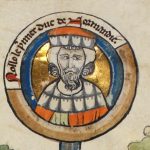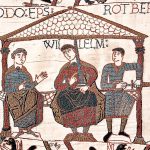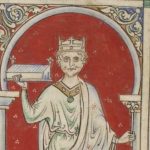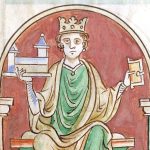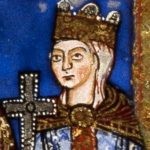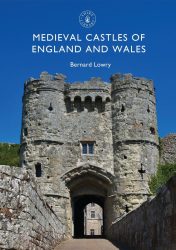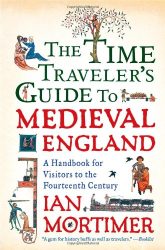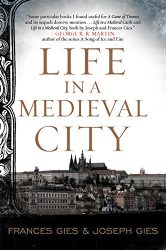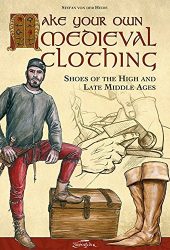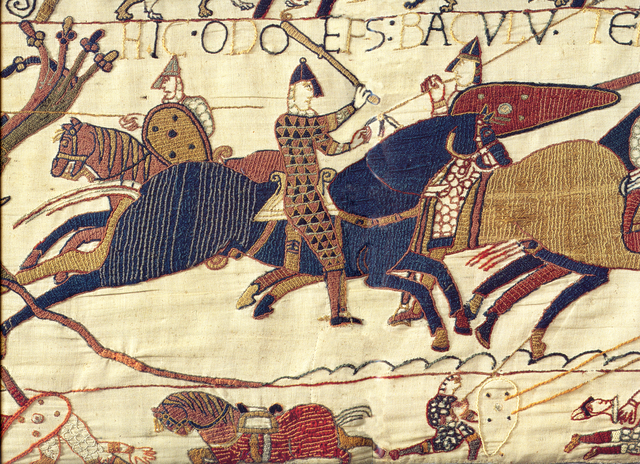
The House of Normandy was a medieval dynasty that originated from the Duchy of Normandy in northern France. Its members played a significant role in the history of England, particularly after the Norman Conquest in 1066, when William the Conqueror, Duke of Normandy, became King of England.
The Norman influence on England was profound and far-reaching, shaping the course of English history in significant ways.
After the Norman Conquest of England in 1066, led by William the Conqueror, the Normans brought about a transformation of English society, politics, culture, and language. So, let’s take a look at some of these changes and the different players that shaped them.
The Norman Influence in Medieval England
The Norman influence on England was multifaceted and enduring, laying the foundation for the emergence of a strong centralized monarchy, a distinct legal system, and a vibrant cultural heritage. For instance, here are some of the things that changed due to the influence of the Conquest:
The Normans introduced a feudal system to England, whereby land was granted in exchange for military service. This system centralized power in the hands of the king and his nobles, establishing a hierarchical social structure that endured for centuries.
The Normans built numerous castles and fortifications throughout England, symbolizing their military dominance and serving as centers of administration and control. These castles played a crucial role in securing Norman rule and subduing resistance from the Anglo-Saxon population.
William the Conqueror implemented legal and administrative reforms to consolidate his control over England. He introduced the Domesday Book, a comprehensive survey of landholdings and resources, to assess taxation and ensure efficient governance. Additionally, Norman legal practices, such as trial by jury and the royal courts, became integral parts of English law.
The Norman Conquest had a profound impact on the English language, leading to the adoption of French words and phrases into the English vocabulary. This linguistic fusion laid the groundwork for the development of Middle English, which emerged as the dominant language of literature and administration in England.
The Normans introduced Romanesque architecture to England, characterized by thick walls, rounded arches, and ornate decorations. They also patronized the construction of grand cathedrals, such as Durham Cathedral and Canterbury Cathedral, which showcased Norman architectural prowess and artistic sophistication.
House of Normandy Family Tree
Key members of the House of Normandy include:
King Rollo (c. 860–c. 930)
King Rollo, also known as Rolf or Hrolf, was a Viking chieftain who became the first Duke of Normandy in the early 10th century. He is credited with establishing the duchy and laying the foundations for the House of Normandy.
- Around the late 9th century, Rollo and his followers raided and settled in the region of present-day Normandy.
- Rollo implemented policies to establish stability and consolidate his power.
- Under his leadership, Normandy became a prosperous and well-governed duchy.
William I, Duke of Normandy (1028–1087)
William I, also known as William the Conqueror, was the first Norman king of England. He successfully invaded England in 1066, defeating King Harold II at the Battle of Hastings and establishing Norman rule over England. William’s reign marked the beginning of the Norman dynasty in England and had a profound impact on English history and culture.
- Conquered England in 1066, defeating Harold II at the Battle of Hastings.
- Instituted feudalism in England, redistributing land to Norman nobles in exchange for loyalty and military service.
- Commissioned the Domesday Book, a comprehensive survey of England’s landholdings and resources.
William II, King of England (1056–1100)
William II, also known as William Rufus, was the second Norman king of England and the son of William the Conqueror. His reign was characterized by conflicts with his brothers and barons, as well as tensions with the Church. William II died under mysterious circumstances, leading to speculation about his death.
- Succeeded his father, William the Conqueror, as King of England in 1087.
- Faced conflicts with his brothers Robert Curthose and Henry, as well as rebellions by powerful barons.
- Instituted legal reforms and strengthened royal authority, but faced opposition from the Church and nobility.
Henry I, King of England (1068–1135)
Henry I, the youngest son of William the Conqueror, succeeded his brother William II as king of England. His reign was marked by efforts to consolidate royal power, including the issuing of the Charter of Liberties and the creation of a centralized administrative system. Henry’s reign saw the beginning of the Plantagenet dynasty in England.
- Ascended to the throne after the death of his brother William II in 1100.
- Implemented administrative and legal reforms, including the establishment of the Exchequer and issuing the Charter of Liberties.
- Faced challenges from rival claimants to the throne and secured the succession of his daughter Matilda.
Empress Matilda
Empress Matilda, also known as Matilda of England, was a key figure in the turbulent period of English history known as the Anarchy. She was the daughter of King Henry I of England and his wife Matilda of Scotland, and she was born in 1102. Matilda’s life was marked by political intrigue, conflict, and ambition.
- Matilda of England, also known as Empress Matilda, was the daughter of King Henry I of England and played a central role in the tumultuous period of English history known as the Anarchy.
- Matilda’s marriage to Geoffrey Plantagenet, Count of Anjou, laid the foundation for the Angevin Empire and strengthened her claim to the English throne.
- Despite facing resistance from her cousin Stephen, Matilda tenaciously asserted her right to rule during the Anarchy, rallying support from loyal nobles and foreign allies.
Books about Medieval Life
More Medieval People
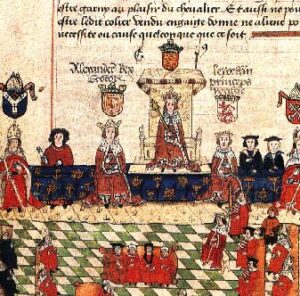
Medieval People: Andrew de Moray
Andrew de Moray a pivotal figure in the Wars of Scottish Independence and stands as a symbol of Scottish resistance against the English.
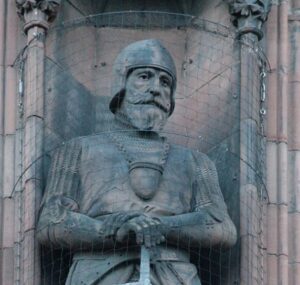
Medieval People: James Douglas, Lord of Douglas
James Douglas was a formidable figure renowned for his unwavering loyalty, military prowess, and unyielding commitment to Scotland’s cause.
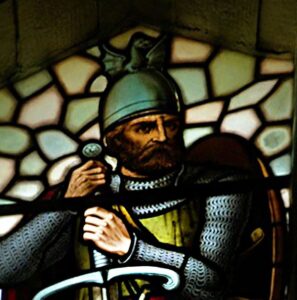
Medieval People: William Wallace
William Wallace commands reverence as a symbol of resistance against English oppression during the Wars of Scottish Independence.
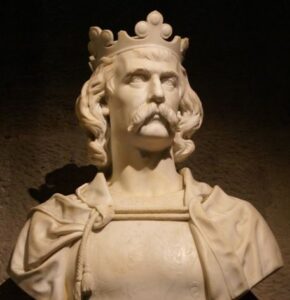
Medieval People: Robert the Bruce
Robert the Bruce was one of Scotland’s most renowned medieval kings and a prominent figure in the country’s history.
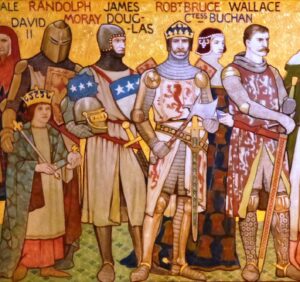
Scotland’s Most Famous Medieval Knights & Warriors
Scottish knights played a crucial role in shaping the medieval history of Scotland. Learn more about their bravery and fierce determination.
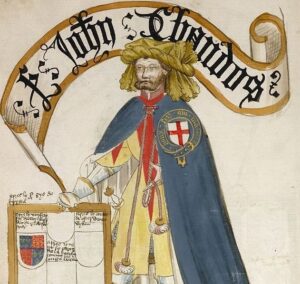
Medieval People: Sir John Chandos
Sir John Chandos was a notable medieval knight and military commander who played a significant role in the Hundred Years’ War.

